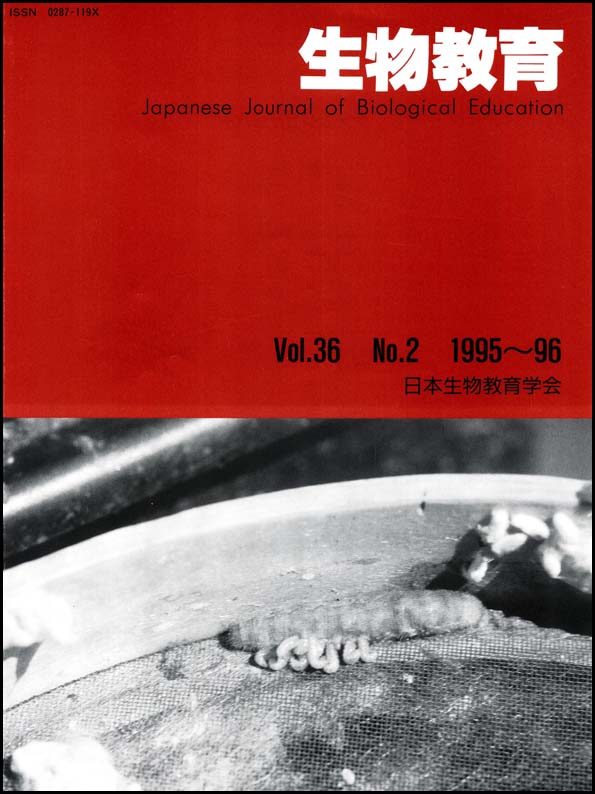
- Issue 3-4 Pages 154-
- Issue 2 Pages 98-
- Issue 1 Pages 2-
- |<
- <
- 1
- >
- >|
-
N. Suzuki, T. Ikeda, F. Yamada, T. Shimizu, Y. Koshida1996Volume 36Issue 2 Pages 98-114
Published: 1996
Released on J-STAGE: December 23, 2022
JOURNAL FREE ACCESSA graph which shows the percentage of correct answers given by candidates to each question was devised. Each question is one dot in the Cartesian coordinate system After taking the test the candidates were divided into five groups according to their scholastic ability. In the graph the corret answer percentage of the mediam group is assigned to the abscissa and the difference in the correct answer percentage between the most apt and the median groups are assigned to the ordinate. By the distribution pattern of the dots, the authors tried to analyze, as a whole, how well the test could discriminate the scholastic ability of candidates, as well as how difficult the test was for the candidates to answer.
Graphs for the biology questions on the National Center’s Tests for each year from 1990 to 1995 were made; biology questions were classified according to field and item.
Analytical results obtained from these graphs were as follows: (1) questions about genetics were apparently more discriminating than those about other fields, probably because genetics is the most theoetical among the fields of biology; (2) questions asking about experimental methods or procedures were generally the most difficult for candidates to answer, probably because they had scarcely had training or practice in biology experiments at their high schools; (3) many good questions recommended by high school teachers were less discriminating as far as scholarship and less easy for candidates to answer, while some improper questions which were criticized by the teachers were difficult for candidates to answer but were effective in discriminating among the candidates’ abilities.
View full abstractDownload PDF (44354K) -
T. Arakawa, K. Hashimoto1996Volume 36Issue 2 Pages 115-121
Published: 1996
Released on J-STAGE: December 23, 2022
JOURNAL FREE ACCESSExperimental methods to demonstrate the excretory function of an insect internal organ, the Malpighian tubules, were developed. Larvae of three lepidopteran species, Papilio bianor, Pseudaletia separata and Bombyx mori, were dissected in a tray for laparotomy showing their internal organs. Sodium chloride (NaCl) solution (150mM) containing O. 0005% methyl green dye was poured into the tray resulting in an immer sion of the insect body in the solution. In about 20 minutes, Malpighian tubules were observed to absorb the dye and to concentrate it in their internal cavity. A similar experiment was performed using a mixed solution of two different dyes. When the NaCl solution containing 0.0005% methyl green dye and 0.001% orange G dye was used, Malpighian tubules selectively concentrated the former one. A mixture of methyl green and amaranth dye could also have shown the selective excretion of methyl green dye by the tubules. These experiments clearly showed an ability of Malpighian tubules to excrete methyl green dye selectively. Educational application of these experiments to upper secondary school biology is discussed.
View full abstractDownload PDF (26235K)
-
M. Suzuki1996Volume 36Issue 2 Pages 122-131
Published: 1996
Released on J-STAGE: December 23, 2022
JOURNAL FREE ACCESSA nature study field trip which emphasized the use of all five senses was given to upper secondary school students in The University Forest, Faculty of Agriculture, The University of Tokyo from 1985 to 1989. Many students were impressed by the pre served nature in the forest. It has been clarified that this nature study field trip makes up for a lack of “protoexperience”, formative childhood experience, in nature, and it heightens students'motivation for academic achievement in learning biolgy.
For now, it is necessary to adopt nature study field trips emphasizing the impor tance of using the five senses actively in biology classes in upper secondary school education.
View full abstractDownload PDF (28262K)
- |<
- <
- 1
- >
- >|